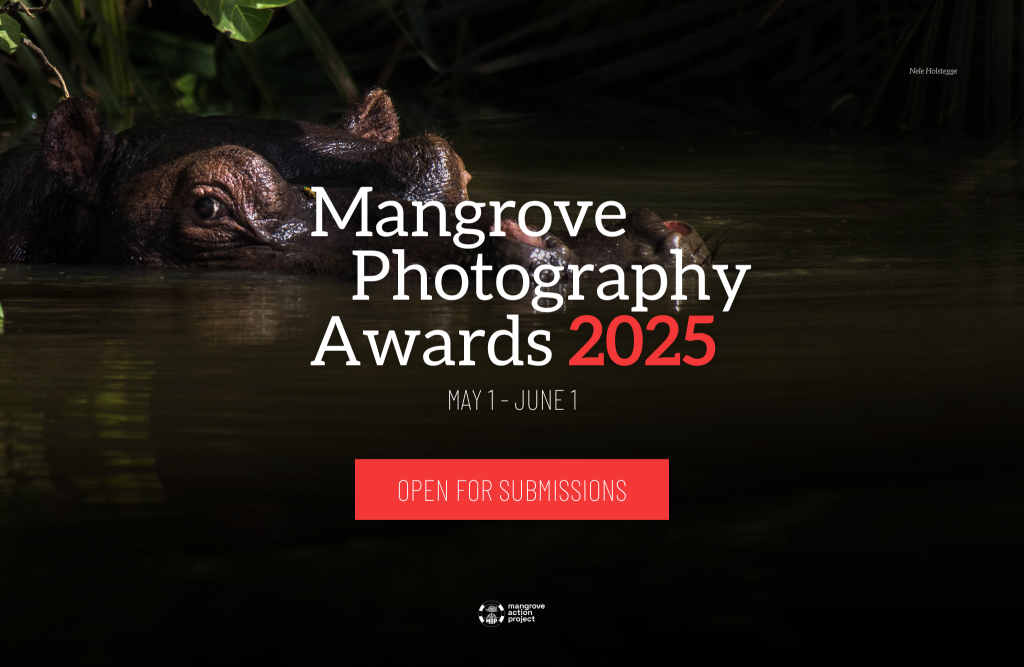
Celebrating the Winners of the 2025 MPAs
Putting mangrove beauty and fragility in the spotlight
We’re thrilled to share the winners of the 11th Mangrove Photography Awards, an annual initiative by Mangrove Action Project that celebrates the vital connection between people and mangrove ecosystems through powerful visual storytelling.
This year’s competition saw a record-breaking 3,303 entries from 78 countries, capturing the beauty, fragility, and ecological importance of mangroves across the globe. From breathtaking nightscapes to intimate portraits of wildlife and communities, the winning images spotlight both the wonder and the vulnerability of these essential coastal forests.
To reflect the diversity of mangrove ecosystems and stories, new subcategories were introduced in the Wildlife, Landscape, and People categories. Photographers under the age of 24 also competed for the title of Young Mangrove Photographer of the Year.
In a first for the Awards, the Emirates Award and Arabian Gulf Award were launched in partnership with the Environment Agency – Abu Dhabi, celebrating local photographers and conservation efforts in the UAE and wider Gulf region.
Judged by a panel of renowned experts passionate about conservation storytelling—including Thai marine biologist and photojournalist Sirachai “Shin” Arunrugstichai, wildlife photographer Chien Lee, and shark naturalist Tanya Houppermans—this year’s selection features 88 standout images that inspire, educate, and call for action.
Mangrove Photographer of the Year 2025
Mark Ian Cook has been named Mangrove Photographer of the Year 2025, for his image, ‘Birds’ Eye View of the Hunt’ (above). Cook’s aerial shot documents what could be the last of the Everglades’ iconic birds, whose very health and survival is intrinsically linked with the health of the Everglades.
At first glance, this scene of Roseate Spoonbills gliding over a lemon shark hunting mullet in the mangrove-lined waters of Florida Bay may give the appearance of a peaceful and balanced habitat. But Cook’s aerial shot documents what could be the last of the Everglades’ iconic birds, whose very health and survival is intrinsically linked with the health of the Everglades. Despite years of successful restoration and recovery efforts — bringing Florida’s Spoonbill population back from a mere 15 pairs in the 1800s — rising sea levels are now significantly impacting the behavior of these birds in an area where a few centimeters makes the difference between a species thriving or leaving.
“Historically, Florida Bay was the primary nestling region of the Roseate Spoonbill in the US, but this species is becoming increasingly rare there as sea level rise negatively impacts their important mangrove foraging habitat,” Cook said. “Spoonbills are tactile foragers, meaning they feed by touch. However, for this foraging method to be successful, the birds need relatively shallow water with very high densities of fish. This becomes particularly critical during the energetic bottleneck of the nesting season. With climate-change induced sea-level rise, these critical lower water depths in the mangroves are increasingly failing to be met, fish densities are insufficient for effective foraging, and fewer birds are able to breed.”
“I love the convergence of all the elements in that exact moment. It clearly shows the diversity of life that lives and dies, both aerial and aquatic in the same space and time, that all depends on the mangrove ecosystem”, says judge Shin.
Click here to view all the winners and finalists on the Mangrove Photography Awards site.
- Read more about The 2025 Mangrove Photography Awards Are Now Open!Mangrove Photography Awards
The 2025 Mangrove Photography Awards Are Now Open!
The 2025 Mangrove Photography Awards Are Now Open! We’re thrilled to announce the launch of the 11th annual Mangrove Photography…


